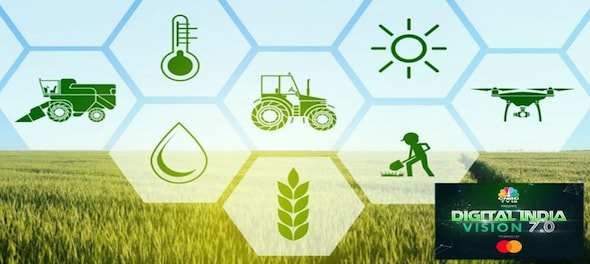
What comes to your mind when you hear the word Digitization? Developments in cellular infrastructures? Remote connectivity? Or cashless payment? While the Digital India Initiative has disrupted the majority of these sectors and brought technological advancements to nearly every citizen, one area still relatively untouched is Agriculture.
As per Statista, agriculture's contribution to India's GDP soared merely from $81.36 billion to $83.43 billion between Q1 2021 and Q1 2022. While some may suggest that it surged 63% from Q4 2021, it’s worth noting that agricultural cycles are annual where periodic surges can be seen every quarter, depending on seasonal conditions.
However, when we observe that 42.6% of the employed workforce is in agriculture, its economic imbalance is quite evident! Despite recent crop production developments, this industry has significant technological barriers. Since agriculture depends on the climate, the hour of the need is to have an innovative approach with AgriTech solutions.
The Current Pain Points of Indian Agriculture
1. Lack of knowledge about innovative methodologies: Nearly half of the Indian farmers are smallholders relying on traditional, labour-intensive methods. That, too, with limited access to modern machinery, logistics, and analytical data such as soil composition and climate patterns, puts them against uncertainty.
2. Unpredictable climate: Crop yields are directly vulnerable to adverse weather and natural processes such as soil degradation and pest attacks, not to forget droughts and floods. Recent reports by the Indian Council of Agricultural Research predict that climatic changes could reduce yields by up to 9% in the next 25-30 years.
3. Logistics and supply chain: India's supply chain and pricing of agricultural products are just unregulated. The lack of transparency is generally caused by stakeholders, which fuels the suffering of Indian farmers with inconsistent pricing and a lack of accountability. This has a direct effect on market price and customer trust.
How AgriTech Is Changing The Narrative
AgriTech collectively describes adopting technological innovations like Big Data Analytics, Machine Learning, and Cloud Computing applications to offer more excellent climate resiliency, higher crop yield, seasonal predictions, and a regulated pricing system. As the Indian agricultural industry will continue to leverage innovative solutions, AgriTech firms will assist with precision farming techniques to aid every step of the farming process, including crop protection, nutrition, cultivation, harvest, and logistics. Such innovation will only be possible with thoughtful investments in AgriTech firms.
Alongside computational solutions to aid AgriTech, Biotechnology will also enhance genetic engineering, molecular diagnostics, and genomics-assisted breeding to develop crop varieties with higher nutrition and tolerance to abiotic stresses. While agricultural researchers are optimistic about the scalability of AgriTech, administrative logjams must be kept transparent to assist its broader adoption. This further emphasises improving the income of Indian farmers, which technology alone cannot solve. However, amid Digital India Initiative, the solution isn’t far-fetched.
The State of AgriTech Amid Digital India Initiatives
The demand for AgriTech is gradually becoming well-acknowledged with no small contribution from the Digital India initiative. Under the Digital Agriculture Mission 2021-2025, the Union Minister of Agriculture & Farmers Welfare, Mr Narendra Singh Tomar, has signed five Memorandum of Understanding (MoU) with Cisco, NCDEX, Jio Platforms Pvt Ltd, ITC, and Ninjacart to accelerate AgriTech projects leveraging technologies like Machine Learning, Big Data Analytics, and even Blockchain. This has been coupled with remote sensing and GIS technologies to enhance farming methodologies.
Interventions built around remote sensing, aerial surveying, and market insights are a few approaches that permit farmers to gather, visualise, and asses crop health conditions efficiently and cost-effectively. These data act as an initial indicator to further identify potential challenges and promptly provide actionable outputs to deal with agricultural roadblocks. Cisco’s Agricultural Digital Infrastructure (ADI), Jio Platforms’ JioKrishi, and ITC’s Site-Specific Crop Advisory (SSCA) are collectively implementing technological advancements that enable:
· Increased agricultural yields at a lowered production cost
· Lessen chemical applications to inhibit soil degradation
· Efficient use of resources like water and fertilisers
· Price safety to improve socio-economic statuses of farmers
· Reduction of agricultural waste to lessen ecological impacts
The Future of Indian Agriculture
With the current state of agriculture in India, local and foreign AgriTech players need to deploy solutions at an unprecedented rate to cater to over 267 million Indian farmers. However, despite the rapid adoption of modern technologies, ease of access, affordability, and governance policies remain influential factors. Integrating this ecosystem into Indian agriculture won’t be easy since multi-stakeholder approaches will be necessary for a scalable impact on the farming landscape, with the government playing a pivotal role in enabling the possibilities.
This is a partnered post.



